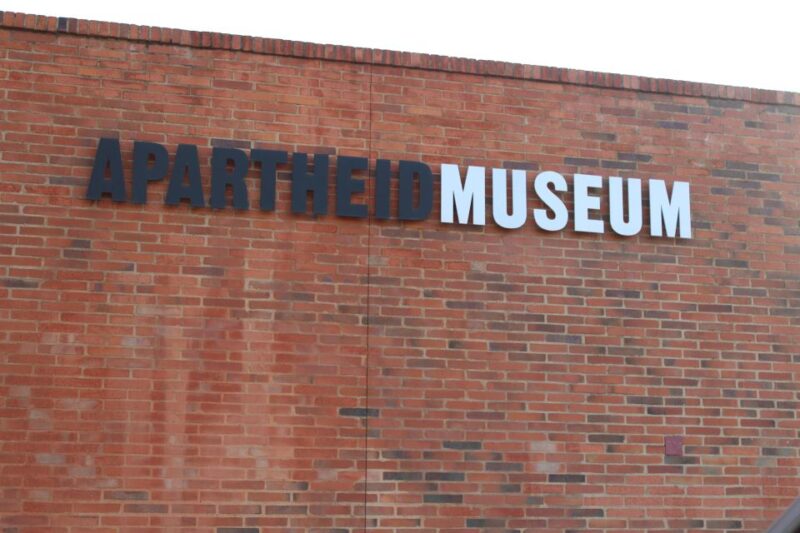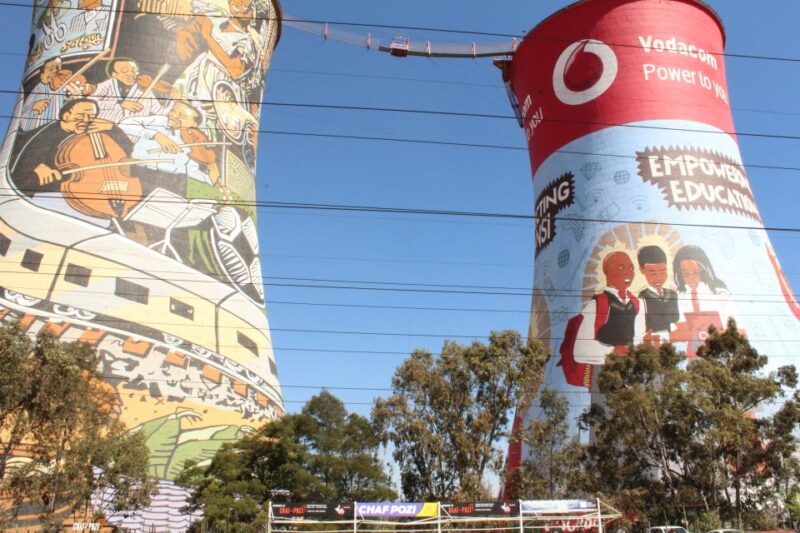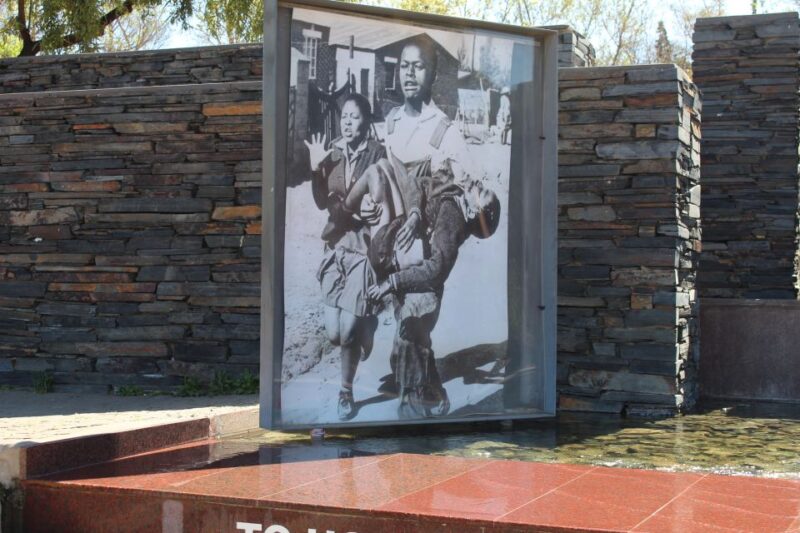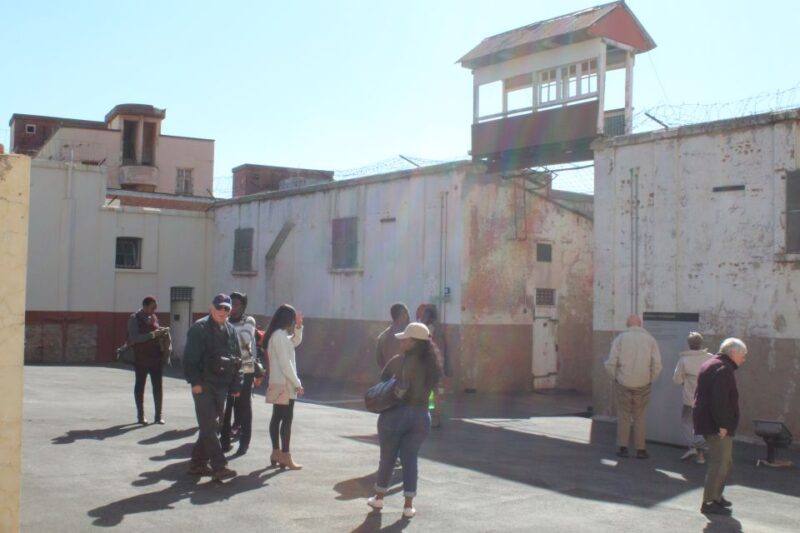Delving into South Africa’s complex history, the Soweto and Apartheid Museum Tour takes visitors on an immersive journey through one of the country’s most significant townships and the museum that chronicles the apartheid era. From exploring the Sanctuary Mandela to uncovering the role of the Soweto community in the anti-apartheid movement, this comprehensive experience culminates at the Apartheid Museum, where a chronological exploration sheds light on the nation’s racial segregation and the ongoing fight for human rights. With insights into the personal life of Nelson Mandela and the broader struggle for freedom, this tour promises to leave a lasting impression on those seeking to understand South Africa’s past.
Key Points

- The tour covers a 7-hour duration with pickup and drop-off services from Sandton, East Rand, and Johannesburg.
- Visitors explore Nelson Mandela’s former residence at the Sanctuary Mandela and learn about his personal life and the anti-apartheid movement.
- The tour includes a guided visit to the Constitution Hill Human Rights Precinct, showcasing the former prison complex and the Constitutional Court.
- The Soweto Township tour allows exploration of Vilakazi Street, the Hector Pieterson Memorial and Museum, and the iconic Orlando Towers.
- The Apartheid Museum provides a chronological and immersive experience to understand South Africa’s history of racial segregation and the struggle for human rights.
Tour Duration and Logistics

The tour duration spans 7 hours, with pickup and drop-off services offered from Sandton, East Rand, and Johannesburg locations. Travelers can check availability for various starting times to accommodate their schedules.
The tour is led by a live guide who provides commentary in English throughout the experience. Guests have the flexibility to cancel their reservation up to 24 hours in advance without any penalties.
The itinerary covers key historical and cultural sites, including the Sanctuary Mandela, Constitution Hill Human Rights Precinct, Vilakazi Street, Soweto Township, Orlando Towers, and the World Cup Stadium, providing a rundown of South Africa’s apartheid history and the struggle for human rights.
Ready for more culture? More museums we feature in Johannesburg
Sanctuary Mandela Tour

Visitors begin their tour at the Sanctuary Mandela, where they embark on a 15-minute guided exploration of the former residence of Nelson Mandela, the iconic leader who played a pivotal role in South Africa’s anti-apartheid movement.
The tour delves into Mandela’s personal life, offering a glimpse into his humble beginnings and the challenges he faced during the apartheid era. Guests will learn about the significance of the property and its role in shaping Mandela’s political activism.
Through interactive exhibits and engaging narratives, the tour provides a compelling and immersive experience, allowing visitors to better understand the life and legacy of this revered global figure.
Constitution Hill Human Rights Precinct

After exploring the Sanctuary Mandela, the tour continues to the Constitution Hill Human Rights Precinct, where guests spend an hour on a guided tour.
This historic site formerly served as a prison complex, housing political activists and ordinary criminals during the apartheid era. Today, it stands as a powerful symbol of South Africa’s journey towards democracy and the protection of human rights.
The guided tour of Constitution Hill includes the following highlights:
- The Old Fort Prison, which held notable figures such as Nelson Mandela and Mahatma Gandhi.
- The Women’s Jail, where female political prisoners were incarcerated.
- The Number Four prison block, known for its harsh conditions.
- The Constitutional Court, showcasing the country’s commitment to human rights.
Exploring Soweto Township
From Constitution Hill, the tour ventures into the vibrant Soweto Township, offering a glimpse into the lives and history of its residents.
Guests explore Vilakazi Street, the only street in the world to have housed two Nobel Peace Prize laureates – Nelson Mandela and Desmond Tutu.
Along this iconic thoroughfare, they visit the Hector Pieterson Memorial and Museum, which commemorates the student uprising of 1976 against apartheid education policies.
The tour then takes visitors to the Orlando Towers, a pair of vibrant, graffiti-covered cooling towers that have become an iconic landmark.
Throughout the township, guests witness the resilience and spirit of the Soweto community, learning about its pivotal role in the anti-apartheid struggle.
More Great Thing To Do NearbyVisiting the Apartheid Museum
At the Apartheid Museum, guests explore South Africa’s turbulent past, learning about the country’s notorious system of racial segregation and oppression through immersive exhibits and powerful displays.
The museum’s chronological layout guides visitors through the history of apartheid, from its origins to its demise.
Key highlights include:
- The ‘Races’ exhibit, which challenges visitors’ perceptions of race and identity.
- The ‘Pass Laws’ display, which illustrates the restrictive policies that controlled the movement of Black South Africans.
- The ‘Uprising’ section, which documents the anti-apartheid protests and resistance.
- The ‘Release’ area, which celebrates the triumph of democracy and the release of Nelson Mandela.
Leaving the Apartheid Museum, guests emerge with a deeper understanding of South Africa’s complex past and a renewed appreciation for the struggle for human rights.
Hector Pieterson Museum and Mandela House
Nestled within the vibrant Soweto township, the Hector Pieterson Museum and Mandela House offer visitors a poignant glimpse into the pivotal events and influential figures that shaped South Africa’s anti-apartheid movement.
The Hector Pieterson Museum commemorates the tragic student uprising of 1976, when Pieterson was killed by police during a peaceful protest. Visitors can see the iconic photograph that captured his lifeless body.
Nearby, the Mandela House provides an intimate look into the life of Nelson Mandela, the revered leader who spent 27 years imprisoned before becoming South Africa’s first black president.
These sites provide a powerful and emotional connection to the country’s struggle for freedom and equality.
Orlando Towers and World Cup Stadium
Beyond the Hector Pieterson Museum and Mandela House, the tour also takes visitors to the iconic Orlando Towers and the World Cup Stadium, providing a well-rounded exploration of Soweto’s rich history and modern landmarks.
The Orlando Towers, with their vibrant colors and bungee jumping facilities, offer a thrilling perspective of the township.
Nearby, the iconic World Cup Stadium, which hosted the 2010 FIFA World Cup, stands as a testament to Soweto’s global significance. Visitors can:
- Admire the striking architectural design of the stadium
- Learn about its role in the historic World Cup event
- Discover the stadium’s community initiatives and impact on the local area
- Explore the surrounding facilities and amenities
Inclusions and Exclusions

The tour package includes hotel pickup and drop-off, all entrance fees, and a professional guide who provides commentary throughout the experience.
However, the cost of lunch and alcoholic drinks aren’t covered in the package. Bottled water is provided, but visitors will need to cover the cost of any additional beverages they wish to purchase during the tour.
The comprehensive itinerary allows participants to explore key historical sites related to apartheid, such as the Apartheid Museum, Hector Pieterson Museum, and Mandela House Museum.
With a focus on South Africa’s complex history and the fight for human rights, this tour offers an immersive and educational experience for visitors.
Frequently Asked Questions
Can I Bring My Own Food and Drinks on the Tour?
Guests are generally allowed to bring their own food and non-alcoholic drinks on the tour. However, it’s recommended to check with the tour operator beforehand to confirm the policy and ensure a smooth experience.
Is the Tour Suitable for People With Mobility Issues?
The tour may be suitable for people with mobility issues, as it includes hotel pickup/drop-off and a professional guide. However, the itinerary involves some walking, so individuals with significant mobility challenges may need to inquire about accessibility accommodations.
What Is the Dress Code for the Tour?
The tour does not have a strict dress code, but visitors should wear comfortable, weather-appropriate clothing and sturdy walking shoes. Casual, layered attire that allows for easy movement is recommended for the various stops and activities during the day.
Are Photography and Video Recording Allowed During the Tour?
Photography and video recording are generally allowed during tours, but visitors should be respectful and avoid disrupting the experience. It’s wise to check with the tour guide about any specific restrictions or guidelines.
Can I Extend the Tour Duration or Customize the Itinerary?
Yes, you can typically extend the tour duration or customize the itinerary. Many tour operators allow flexibility to accommodate individual preferences, though additional fees may apply. It’s best to discuss options directly with the tour provider.
Recap
The Soweto and Apartheid Museum Tour offers a comprehensive exploration of South Africa’s complex history, providing visitors with a deeper understanding of the country’s past and the fight for human rights.
From the personal insights at Sanctuary Mandela to the immersive experiences in Soweto and the Apartheid Museum, this tour is a powerful and educational journey through a critical chapter of South African history.
You can check if your dates are available here:More Museum Experiences in Johannesburg
More Tours in Johannesburg
More Tour Reviews in Johannesburg
Not for you? Here's more things to do in Johannesburg we have recnetly reviewed
- 12 Best 2 Day Tours In Johannesburg
- 20 Best 3 Day Tours In Johannesburg
- 20 Best 4 Day Tours In Johannesburg
- 7 Best Dining Experiences In Johannesburg
- 20 Best Full-Day Tours In Johannesburg
- 7 Best Dinner Tours In Johannesburg
- 22 Best Lunch Experiences In Johannesburg
- 7 Best Food Tours In Johannesburg
- Hassle-Free Airport Shuttle: OR Tambo to Sandton Morningside
- Johannesburg (Sunset & Dinning & Rooftop) Hopping Experience
- Drakensberg Mountains. Tugela Gorge and Amphitheater Hike
- Overnight Hike Sentinal Peak and Tugela Falls
